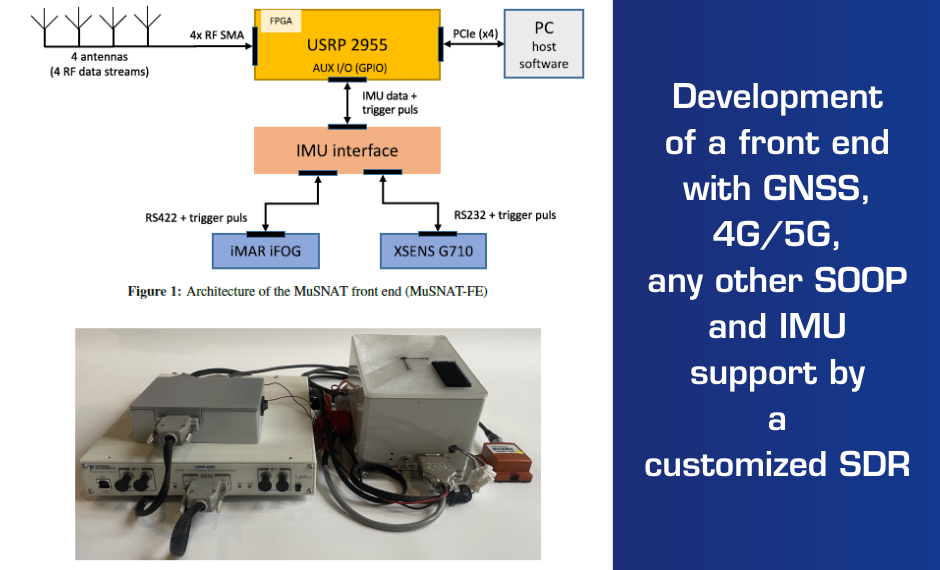Research Report: A collaboration between the Institute for Space Technology and Applications and NOFFZ Technologies GmbH.
Tönisvorst, March 28, 2024 – The Institute of Space Technology and Applications at the University of the Bundeswehr Munich, in collaboration with NOFFZ GmbH, has developed an innovative frontend capable of receiving a wide range of radio signals and enabling precise positioning.
The frontend allows reception of signals in the frequency range from 10 MHz to 6 GHz and can even sample higher frequency bands, such as the Ku-band used for Starlink downlink signals, through external mixers. The system offers four separate high-frequency channels and supports the integration of Inertial Measurement Units (IMUs), making it a powerful solution for inertial navigation.
Based on a customized Software Defined Radio (SDR) specifically tailored for GNSS/INS applications, the frontend enables precise point positioning (PPP) with an accuracy of three centimeters. To ensure this accuracy, a correction of the absolute frequency is applied depending on the selected frequency band.
The integration of IMUs allows for a direct connection with the SDR and synchronization at the FPGA level with the highest accuracy in microseconds. In addition to automatic gain control (AGC) and bit resolution reduction in the FPGA to decrease data throughput, this significantly enhances the frontend’s stability.
The source code of the host and FPGA is available for adaptation to future research endeavors involving new signals for navigation purposes.
“Our new frontend signifies a milestone in the development of precise navigation solutions,” says Thomas Kraus and Nikolas Dütsch, research associates at the UniBw M. “It not only enables highly accurate positioning but also provides flexibility and adaptability for future research to apply new signals amongst others LEO orbit like Xona’s Pulsar service or Starlink for navigation enhancements.”
The frontend is the result of collaboration between the Institute of Space Technology and Applications at the University of the Bundeswehr Munich and NOFFZ GmbH. The research findings and performance data of the frontend have been presented in a scientific publication and are available to the academic community.
You can find the entire research report for further reading here.
